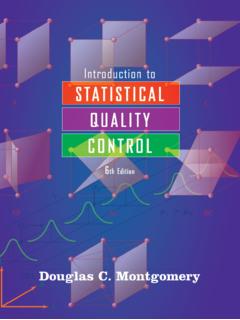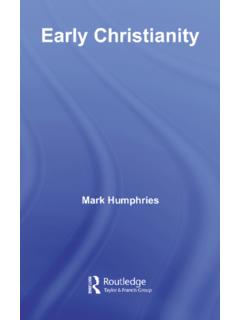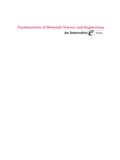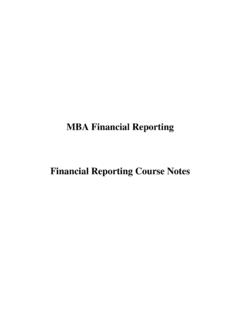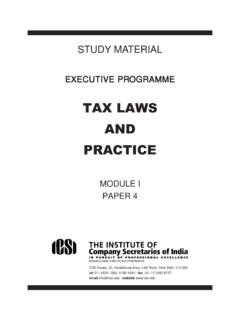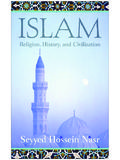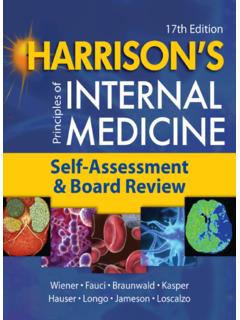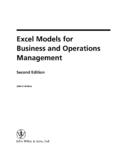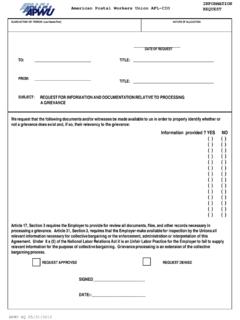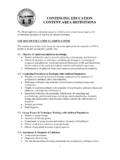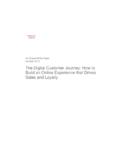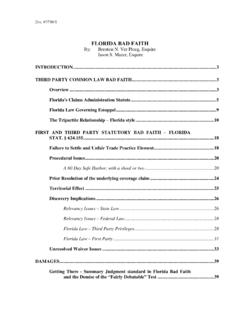Transcription of PRINCIPLES OF EVIDENCE - dl4a.org
1 PRINCIPLES . OF EVIDENCE . FIFTH EDITION. LexisNexis . LexisNexis Law School Publishing Advisory Board William Araiza Professor of Law Brooklyn Law School Lenni B. Benson Professor of Law & Associate Dean for Professional Development New York Law School Raj Bhala Rice Distinguished Professor University of Kansas, School of Law Ruth Colker Distinguished University Professor & Heck-Faust Memorial Chair in Constitutional Law Ohio State University, Moritz College of Law David Gamage Assistant Professor of Law UC Berkeley School of Law Joan Heminway College of Law Distinguished Professor of Law University of Tennessee College of Law Edward Imwinkelried Edward L. Barrett, Jr. Professor of Law UC Davis School of Law David I. C. Thomson LP Professor & Director, Lawyering Process Program University of Denver, Sturm College of Law Melissa Weresh Director of Legal Writing and Professor of Law Drake University Law School PRINCIPLES .
2 OF EVIDENCE . FIFTH EDITION. Teacher's Manual (Revised). IRVING YOUNGER. 1932-1988. MICHAEL GOLDSMITH. Woodruff J. Deem Professor of Law J. Reuben Clark Law School Brigham Young University DAVID A. SONENSHEIN. Professor of Law Temple University School of Law LexisNexis. This publication is designed to provide accurate and authoritative information in regard to the subject matter covered. It is sold with the understanding that the publisher is not engaged in rendering legal, accounting, or other professional services. If legal advice or other expert assistance is required, the services of a competent professional should be sought. LexisNexis and the Knowledge Burst logo are trademarks of Reed Elsevier Properties Inc, used under license. Matthew Bender is a registered trademark of Matthew Bender Properties Inc.
3 Copyright 2011 Matthew Bender & Company, Inc., a member of the LexisNexis Group. All Rights Reserved. No copyright is claimed in the text of statutes, regulations, and excerpts from court opinions quoted within this work. Permission to copy material exceeding fair use, 17 107, may be licensed for a fee of 100 per page per copy from the Copyright Clearance Center, 222 Rosewood Drive, Danvers, Mass. 01923, telephone (978) 750-8400. Editorial Offices 122 Chanlon Road, New Providence, NJ. 201 Mission St., San Francisco, CA 94105-1831 (415) 908-3200. 701 East Water Street, Charlottesville, VA 22902 -7587 (434) 972-7600. ( ). TABLE OF CONTENTS. CHAPTER I - INTRODUCTION: THE CONCEPT OF EVIDENCE 1. CHAPTER II - PRELIMINARY MATTERS 2. CHAPTER III - THE EXAMINATION OF WITNESSES 10.
4 CHAPTER IV - RELAVANCY REFINDED 52. CHAPTER V - HEARSAY 66. CHAPTER VI - PRIVILEGES 125. CHAPTER VII - BURDENS AND PRESUMPTIONS 129. PRINCIPLES OF EVIDENCE 1. CHAPTER I. INTRODUCTION: THE CONCEPT OF EVIDENCE . The authors' view the Law of EVIDENCE to be not merely a set of rules which exclude facts from the consideration of the factfinder, but also as a set of opportunities for the skillful advocate who can articulate an argument for the admissibility or inadmissibility of facts which are helpful or harmful to her client's cause. Thus, the focus of the study of the rules (whether common law or code) should include both discussion of the rationale for exclusion as well as discussion of the ways in which counsel can admit helpful EVIDENCE , within both the EVIDENCE rules and the rules of professional ethics.
5 Discussion could focus on American exceptionalism with respect to trial by jury in both civil and criminal matters. Indeed, the American reliance on the jury as factfinder arguably explains the uniquely American concern with rules of exclusion. PRINCIPLES OF EVIDENCE 2. CHAPTER II. PRELIMINARY MATTERS. Judicial notice is a time and labor saving device for the proof of facts which are either: (1) generally known to residents of the trial jurisdiction or (2) easily verified by an authoritative reference. Note that the mere fact that the purportedly noticed fact is merely known to the judge (as opposed to generally known in the community) is not a basis on which to take judicial notice. The federal rules permit notice to be taken of "adjudicative" facts, but not of "legislative" facts.
6 Adjudicative facts are historical facts relevant to the claims and defenses in the lawsuit. Legislative facts are those which form the policy basis of a statute or rule of law. Examples of adjudicative facts based on common knowledge include, for example, the residential character of a neighborhood or the color of a municipality's police cruisers. Examples of adjudicative facts subject to ready verification include the time of a sunrise on a particular date or the speed limit on a particular street or highway. The second category of facts appropriate for judicial notice are those capable of ready and certain verification by reference to authoritative sources. For this category of judicial notice, the proponent of the EVIDENCE must provide the c ourt with the authoritative source.
7 Typical facts in this category include geographical facts: ( , Main Street runs north and south with a 30 mph speed limit), historical facts (a city was incorporated on July 1, 1970), calendar facts (May 29 of last year was a legal holiday), and scientific facts not open to dispute ( , gasoline vapor is heavier than air). The opponent of EVIDENCE proposed for judicial notice has the opportunity to be heard on the propriety of judicial notice, including the opportunity to produce contrary authoritative sources. Where the court is provided with authoritative sources which prove the fact, judicial notice, on request, is mandatory. The court may, in addition, judicially notice an appropriate fact on its own motion. Judicially noticed facts are binding on the jury in civil cases, while in criminal cases the jury may accept the fact as true but is not required to do so.
8 Varcoe v. Lee (pp. 5-9) states the generally accepted view of judicial notice as a shortcut to proof with 3 requirements (listed on p. 8) where the fact is generally known within the jurisdiction. The Evidentiary Foundation: "The Trial of William "Duff' Armstrong" (p. 12) illustrates the second branch of judicial notice: facts easily ascertainable by reference to indisputable accurate references like an almanac. A good issue for discussion is the probative force of judicially noticed facts. Why should such facts be treated differently in civil and criminal cases? The role of stipulations and limitations (p. 25) on the offer of EVIDENCE is an important aspect of pretrial litigation, particularly in complex litigation. Students should be queried on the advisability of such stipulations and limitations and the ethical and strategic issues which they raise.
9 B. Types of Formal Proof PRINCIPLES OF EVIDENCE 3. This section of the Casebook focuses on an initial discussion of the various ways in which factual propositions are proved. A key matter for discussion here is the distinction between direct EVIDENCE and circumstantial EVIDENCE . Though jurors (and laypersons at large) are skeptical of circumstantial EVIDENCE , students should be made aware of both the superior probative force of circumstantial EVIDENCE ( DNA, fingerprints) and the ability of articulate counsel to convey this to the factfinder. An example, from a classic prosecutor's closing rebuttal argument makes the point. "Ladies and Gentlemen: the defense has told you that no one saw the defendant actually stab the victim, and that the government's case is, therefore, "merely circumstantial.
10 Well, circumstantial EVIDENCE is the most probative EVIDENCE available, not subject to the vagaries of more or less reliable eyewitnesses. Imagine this situation. A person places a cat and a mouse in a box. Five minutes later, the person opens the box and finds only the cat in the box. Although the person did not see the cat eat the mouse, do we believe to a moral certainty that the cat ate the mouse? Of course. This is "merely circumstantial" EVIDENCE , yet it proves a fact beyond any shadow of a doubt.". Pages 26-29 outline real, demonstrative and testimonial EVIDENCE as the ways in which facts can be proved at trial. Obviously we will return to all of these matters in detail throughout the remainder of the course. Pages 29-36 provide the basis for general discussion of the respective roles of judge, jury and counsel in the American adversary system.
